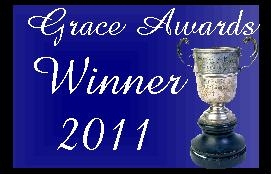
We authors get to rolling in our manuscripts and sometimes forget to pay attention to what we’re putting on the page. Don’t ask me how this happens, I don’t know. I’m as guilty as anyone and often have to giggle at my own silliness as I delete words and phrases from the previous day’s session.
And that’s precisely what I’m talking about–the silly things. These little giggle-producing jewels are actually the big ol’ chunks of coal that increase wordiness, loosen what should be tight writing, and sometimes, simply defy logic.
What do I mean? Well, let’s see if you can recognize the coal in these sentences:
He nodded his head.
She raised the pitcher with her hand.
He gave her a silent smile.
He sat beside her bed. As she drifted into dreamland, she could see him playing with the phone cord.
In the next few minutes, she cooked and served dinner, cleaned the kitchen, bathed the kids, and read them a bedtime story, before collapsing into bed herself.
The first three are silly, nit-picking little things, but if you’re trying to control your wordcount, they’re things you should look for. “He nodded his head.” Think about it: what else would he nod? The same logic doesn’t apply to “He shook his head,” because other things can be “shook”–he shook hands, for instance. But the nod? That’s a head thing, no point being redundant.
Same approach to “She raised the pitcher with her hand.” Uh, opposed to raising it with her foot? Her teeth? “He gave her a silent smile”–as opposed to a noisy one, right?
The last two are tests of logic: How could she see him if she was drifting to dreamland, unless she slept with her eyes opened? Of course, she could see him in her dreams, I suppose. Depends on the context.
How about that last one? Can all that be done “in the next few minutes”? I guess in the overall expanse of a person’s life, the four hours, more or less, that it would take to do everything listed there could be considered “a few minutes.” However, when we’re thinking in terms of “minutes,” we’re thinking in terms of five or ten clicks of the clock’s big hand, not two hundred forty of those suckers.
When you’re reviewing your work or are in your first edit, hunt these little culprits down. Use the logical side of your brain. Think like an editor–because that’s what editors do. They take everything literally. And good thing they do, because you never know when one of your readers has a keen sense of logic and catches all these things that you didn’t.
Logic. It’s not just for philosophers and mathematicians.


















Nothing drives me batty like things in books that logically can’t happen. I read something the other day where the hero put the lady on his horse, behind his saddle, and then mounted in front of her. Wearing a kilt. The horse already described as a tall, imposing animal. Yeah.
LikeLike
Hahahahaha!!!!! That is priceless!
As a freelance editor, I see things like that all the time. They’re fun. I giggle the whole time I’m deleting them.
LikeLiked by 1 person
Yes, I agree. I try to picture the action, movement by movement. If I have to use too much imagination, then I look a bit harder. One error that sometimes catches me are restaurant scenes. No one walks in, sits down and is served their meal within two dialogue exchanges. I really watch for that and other illogical behavior patterns. Great post, as always, Linda.
LikeLike
So true. And I appreciate your idea of picturing the action “movement by movement.” That helps considerably when considering the sequence of the action. When you also *analyze* the scene, you run a better chance of accuracy. Would he really say this? Would she really do that? Given all the action, does he have time to _______? If he’s so strong, can she really ________?
Oh, I could go on and on. Maybe I should write another post about it.
LikeLiked by 1 person
Yes, analyzing the scene is imperative. Even if you are writing fantasy, the characters must act in a logical manner according to their world. Otherwise, it becomes confusing and pulls the reader out of the story. Observance of natural conversation, body movements, and other real world actions should also be a must. I try to use people I know as loose models, (Yeah, I know. 😉 ) to help with actions, speech, and other character movements. I can picture how “Betty” or “Joe” would respond, gesture. etc. I actually use composite characters so I don’t get repetitious or too close to the real person. It helps, but nothing is fool proof except a careful analysis of the scene during editing.
I think another post on the subject would be appreciated. You would most likely touch on several area that one, or more of us, hadn’t thought about. 🙂
LikeLiked by 1 person
I’m beginning to think you should write it. How about a post for Monday? You game?
LikeLike
Yes! This is great. This is exactly the sort of thing I’ve been working on lately in trying to trim Wayfarer down to size.
LikeLike
I can’t imagine you have too many of these errors, but I figure all writers have some. Have fun with Wayfarer!
LikeLike